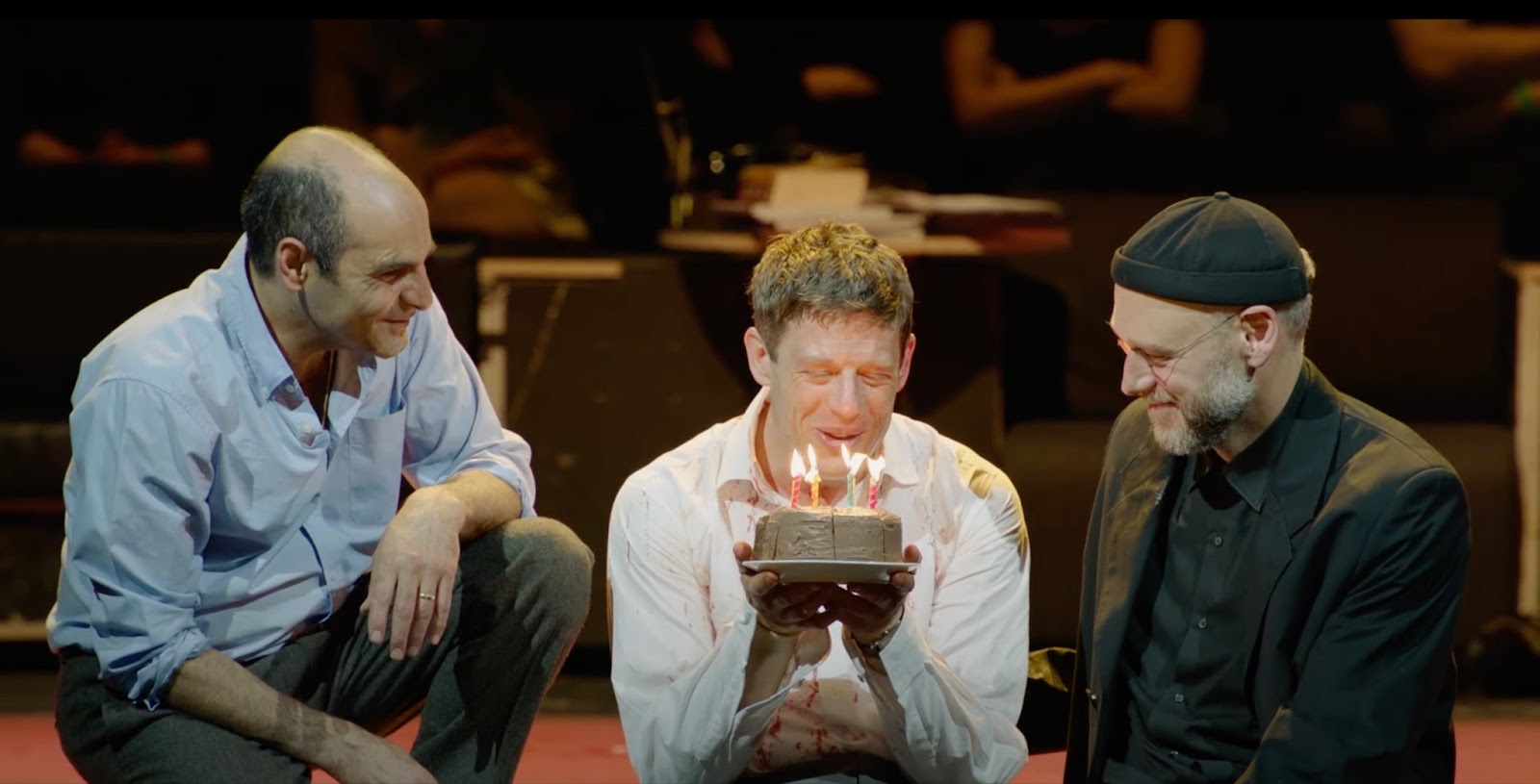
A Little Life Play: A Poignant Journey
In the realm of contemporary theatre, few plays have stirred as profound an emotional whirlpool as “A Little Life.” Adapted from Hanya Yanagihara’s eponymous novel, the play delves into the complexities of friendship, suffering, and the quest for solace amidst the relentless torrents of life. This review embarks on a journey through the play’s narrative labyrinth, unraveling the layers of its storytelling, character arcs, and thematic profundity, all while bathing in the play’s atmospheric brilliance.
The Genesis of a Theatrical Phenomenon
Bringing “A Little Life” from the confines of a novel to the expansive realm of the stage was nothing short of a monumental undertaking. Hanya Yanagihara’s novel, renowned for its intricate narrative and profound emotional depth, presented a unique challenge for adaptation. The creators embarked on this journey with a clear vision: to retain the soul of the story while presenting it in a form that resonates with the immediacy and intimacy unique to theatre.
The process involved meticulous deconstruction of the novel’s themes, characters, and narrative arcs. The team distilled the essence of the story, focusing on its core emotional trajectories and the dynamic interplay between the characters. This distillation was not merely about condensing the content but about capturing the novel’s spirit, its atmospheric depth, and the profound relationships it explores.
The transformation from page to stage required innovative narrative strategies and artistic approaches to convey the novel’s complex internal monologues and the nuanced evolution of relationships over time. The play’s structure was crafted to echo the novel’s multifaceted narrative, employing flashbacks, monologues, and a non-linear timeline to weave the intricate tapestry of the characters’ lives.
Character Tapestry: The Heartbeat of the Narrative
At the epicenter of “A Little Life” are Jude St. Francis, Willem Ragnarsson, JB Marion, and Malcolm Irvine. These four characters, each distinct in their aspirations and struggles, form the narrative’s pulsating heart. The portrayal of their intertwined destinies on stage is a nuanced ballet of emotion and depth, with actors delving deep into their roles to bring out the textured layers of friendship, pain, and redemption that define the story.
- Jude St. Francis: Embodied with a haunting vulnerability, Jude’s character is a complex amalgam of trauma, resilience, and the relentless search for belonging. The portrayal demands a profound emotional range, capturing Jude’s internal turmoil and moments of fragile hope;
- Willem Ragnarsson: Willem’s unwavering loyalty and gentle strength serve as a counterpoint to Jude’s struggles. The character’s evolution from an aspiring actor to a steadfast anchor in Jude’s life is portrayed with subtle grace;
- JB Marion: JB’s vibrant personality and artistic ambitions bring a dynamic energy to the stage. His journey explores themes of friendship, envy, and the quest for identity;
- Malcolm Irvine: As the architect of the group, Malcolm’s narrative weaves through themes of success, familial expectations, and the search for personal space within the tapestry of shared lives.
The actors’ portrayal of these characters transcends mere performance, inviting the audience into the intimate world of enduring bonds and personal battles.
The Alchemy of Set Design and Lighting
The minimalist ethos of the set design serves as a canvas for the narrative’s emotional spectrum. The strategic interplay of light and shadow mirrors the story’s oscillation between moments of warmth and the shadows of past traumas. This visual metaphor extends to the architectural elements on stage, where sparse, versatile set pieces transform to evoke varied settings — from the characters’ shared apartment to the solitary confines of Jude’s office.
Lighting plays a pivotal role in accentuating the narrative’s mood shifts. Warm, soft lighting envelops scenes of camaraderie and gentle moments of solace, while stark, angular shadows cast the harrowing contours of Jude’s flashbacks and the characters’ moments of despair. This visual language not only guides the audience through the narrative’s landscape but also amplifies the emotional resonance of each scene.

A Symphony of Sorrow and Hope: The Musical Score
The musical score of “A Little Life” is a woven tapestry of melodies that serve as the emotional undercurrent of the narrative. The compositions range from delicate, almost ethereal motifs that underscore moments of intimacy and friendship, to powerful, resonant themes that capture the characters’ inner turmoil and moments of crisis.
- Friendship Theme: A recurring melody that evokes the bond between the characters, manifesting in scenes of shared joy and support;
- Jude’s Theme: A poignant composition that reflects Jude’s internal struggle, evolving throughout the play to mirror his journey;
- Crescendos of Anguish: Powerful musical surges that accompany the narrative’s most intense moments, amplifying the emotional impact.
This auditory landscape enriches the narrative, adding a layer of sensory depth that complements the visual and performative elements of the play.
Directorial Vision: Steering the Emotional Odyssey
The director’s vision in “A Little Life” is a masterful orchestration of narrative elements, performances, and technical artistry. This vision is most evident in the pacing of the play, which is meticulously crafted to navigate the dense emotional terrain of the story. The director balances moments of intense emotional depth with lighter, more connective scenes, allowing the audience to journey through the narrative without becoming overwhelmed.
The director’s approach to character development and narrative pacing ensures that each character’s arc is fully explored, providing a window into their inner worlds. This careful balance maintains the narrative’s emotional integrity, ensuring that the audience remains fully engaged and empathetic to the characters’ experiences.
Audience Reception: A Mirror to the Play’s Impact
The impact of “A Little Life” on audiences is profound and multifaceted. Theatre-goers emerge from the experience visibly moved, with many reporting a deep emotional connection to the characters and their journeys. The play’s ability to evoke such a strong response is a testament to its power as a piece of storytelling and its effectiveness in translating the novel’s depth to the stage.
The emotional engagement required by “A Little Life” is considerable, but it is matched by the catharsis and introspection it offers. Audience members often describe the experience as transformative, prompting reflection on themes of friendship, resilience, and the human capacity for both suffering and love.

The Legacy of “A Little Life” in Modern Theatre
“A Little Life” has carved a unique niche within the landscape of contemporary theatre, challenging conventional storytelling norms and pushing the boundaries of emotional engagement. Its exploration of deep, often difficult themes, combined with its innovative narrative structure and depth of character development, has set a new standard for theatrical productions.
The play’s legacy lies not only in its artistic achievements but also in its ability to foster a universal dialogue around themes of human experience, resilience, and the transformative power of art. “A Little Life” stands as a poignant testament to the capacity of theatre to move, challenge, and inspire.
Reflections and Ruminations: The Ethical Quandary
The portrayal of trauma and suffering in “A Little Life” raises important ethical considerations regarding representation and empathy in art. The play navigates these complex waters with a conscious sensitivity, aiming to honor the depth of the characters’ experiences without sensationalizing their pain.
This careful approach sparks a broader debate about the responsibilities of art and artists in depicting sensitive subjects. “A Little Life” encourages a reflective examination of these issues, prompting audiences and creators alike to consider the impact of storytelling choices on both individuals and collective understanding.
A Little Life: A Conduit for Community and Conversation
The play extends its influence beyond the theatre, acting as a catalyst for community engagement and conversation. Post-performance discussions, mental health awareness initiatives, and art-based community projects have all been inspired by “A Little Life,” highlighting the play’s role in fostering a space for shared exploration of challenging themes.
These engagements reflect the play’s ability to transcend the boundaries of traditional theatre, creating a platform for dialogue and connection. “A Little Life” is not just a story told on stage; it is an ongoing conversation about life, loss, love, and the enduring power of human connection.
Conclusion
In conclusion, “A Little Life” play is a monumental achievement in theatre, marrying the intricacies of narrative, performance, and stagecraft to deliver a profoundly moving experience. It’s a testament to the power of storytelling and its capacity to touch hearts, provoke thought, and evoke a spectrum of emotions. As the curtain falls, the journey with “A Little Life” doesn’t end; it lingers, a haunting echo of the play’s lingering embrace.